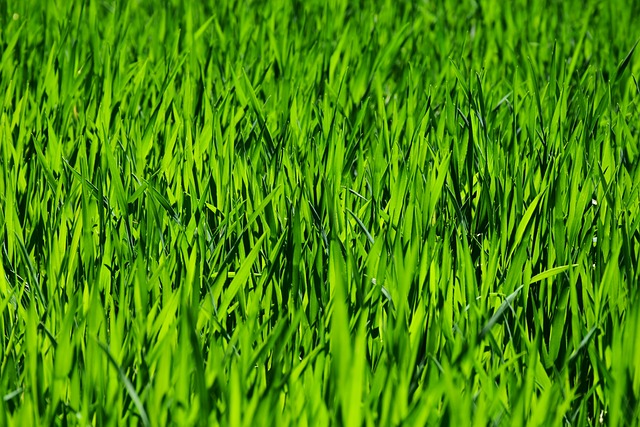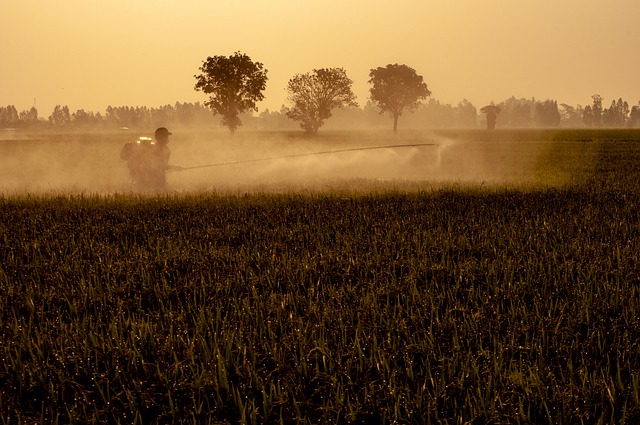To achieve an efficient and effective irrigation system for your lawn care and landscaping needs, it's essential to conduct a thorough analysis of your property's specific characteristics, including soil type, topography, sunlight exposure, and local climate. This ensures the selection of appropriate components and the design of a tailored irrigation layout that caters to diverse areas within your outdoor space. For instance, clay soils versus sandy soils will influence the type of system you need to prevent over- or under-watering. Similarly, slopes require targeted sprinklers, while shaded and well-lit areas necessitate different watering approaches. Incorporating landscaping features like flower beds and garden areas, along with hardscapes such as walkways and patios, into your irrigation plan is critical, as these can significantly affect irrigation patterns and may demand zoned adjustments for optimal performance. Utilizing smart irrigation technology allows for customized watering schedules for different zones, promoting healthier lawns and gardens while minimizing water waste. Proper system sizing, combined with high-efficiency nozzles and drip lines, enhances precision and efficiency in your lawn care routine. For a personalized solution, consulting with professional landscaping services for expert guidance and installation is recommended. Regular maintenance, including seasonal inspections and adjustments, is crucial to sustain the system's efficiency and longevity, ensuring a vibrant, well-maintained landscape throughout the year—a hallmark of effective lawn care and landscaping practices.
Effective lawn care and landscaping hinge on a well-designed irrigation system. This article delves into the critical aspects of installing an irrigation system tailored to your lawn’s unique needs. From evaluating soil moisture to selecting the right equipment, we guide you through each step for a successful setup. Furthermore, maintenance strategies are outlined to ensure your investment in green space flourishes season after season, all while emphasizing key points to enhance your landscaping’s beauty and health.
- Assessing Your Lawn's Needs for Effective Irrigation System Installation
- Steps to a Successful Irrigation System Installation for Optimal Lawn Care
- Maintenance and Upkeep of Your New Irrigation System for Sustained Landscaping Excellence
Assessing Your Lawn's Needs for Effective Irrigation System Installation

When planning for an effective irrigation system installation, a thorough assessment of your lawn’s needs is paramount to ensure efficient water usage and optimal plant health. Understanding your lawn’s soil composition, terrain, sun exposure, and local climate will guide the selection of appropriate irrigation components and layout. For instance, clay-rich soils retain moisture differently than sandier soils, necessitating a system that can accommodate these differences to prevent over or under-watering. Similarly, sloped areas may require targeted sprinklers to address runoff and ensure deep moisture penetration, while shaded areas will have different watering needs compared to sunlit spaces.
Landscaping elements such as flower beds, garden areas, and hardscape features like walkways and patios must also be considered during the planning phase. These elements can affect irrigation patterns and may require zone-specific adjustments within the system. By leveraging smart irrigation technology, homeowners can tailor watering schedules to specific zones, reducing waste and promoting healthier lawns and gardens. Properly sizing the irrigation system to cover all necessary areas without overlap or gaps, and utilizing high-efficiency nozzles and drip lines where appropriate, will further enhance the effectiveness of your lawn care routine. Engaging with a professional landscaping service can provide personalized advice and ensure that your irrigation system installation is tailored to the unique requirements of your outdoor space.
Steps to a Successful Irrigation System Installation for Optimal Lawn Care

For a thriving lawn, a well-designed irrigation system is paramount in delivering the right amount of water to your turf and landscaping. The installation process begins with a thorough assessment of your property’s topography, soil type, plant species, sun exposure, and local climate conditions. This initial evaluation ensures that the irrigation system is tailored to the specific needs of your lawn, promoting healthy growth and conservation of water resources.
Once the site analysis is complete, selecting the appropriate equipment and components for the system comes next. Options range from simple manual timers to advanced smart controllers that can adapt watering schedules based on soil moisture data and weather forecasts. The layout should efficiently cover all areas of the lawn without overlapping sprinkler zones to avoid waste. Trenching for underground pipes, connecting the water source, placing emitters or sprinklers at optimal spacing, and finalizing the layout of the system are all critical steps that contribute to a successful installation. Ensuring that each component is properly installed and functioning is essential for uniform distribution of water, which minimizes runoff and promotes infiltration into the soil. Regular maintenance checks and adjustments will further enhance the efficiency and longevity of your irrigation system, ensuring your lawn care efforts yield a lush, vibrant landscape all year round.
Maintenance and Upkeep of Your New Irrigation System for Sustained Landscaping Excellence

Regular maintenance and upkeep are critical for ensuring your new irrigation system delivers optimal performance, sustaining landscaping excellence over time. A well-maintained system not only conserves water but also contributes to a healthier lawn and garden. To begin with, routine inspections should be conducted at least twice a year, typically in spring and fall, to identify potential issues such as broken sprinkler heads, clogged nozzles, or leaky valves. These components can be easily replaced or repaired, ensuring that each part of your lawn receives the correct amount of water.
Moreover, adjusting the system’s programming for seasonal changes in water requirements is essential for efficient lawn care and landscaping. As seasons change, so do the needs of your plants; thus, the irrigation schedule should be modified accordingly to prevent overwatering or underwatering. Additionally, clearing debris from sprinkler heads and filters regularly allows for unobstructed water flow, preventing pressure buildup that could lead to system malfunction or damage. By incorporating these maintenance practices into your routine, you can prolong the lifespan of your irrigation system, maintain a lush, green lawn, and conserve resources, all of which are key components of effective lawn care and landscaping.
In conclusion, implementing an effective irrigation system is a pivotal aspect of lawn care and landscaping that ensures your outdoor spaces thrive. By meticulously assessing your lawn’s unique needs and diligently following the outlined steps for installation, you can achieve a robust and efficient watering system tailored to your specific environment. Regular maintenance and attentive upkeep are equally crucial for sustaining the health and beauty of your landscape. With these practices in place, your lawn will not only flourish but also conserve water, contributing to overall environmental well-being. Invest in a reliable irrigation system as part of your comprehensive lawn care strategy for lasting landscaping excellence.
